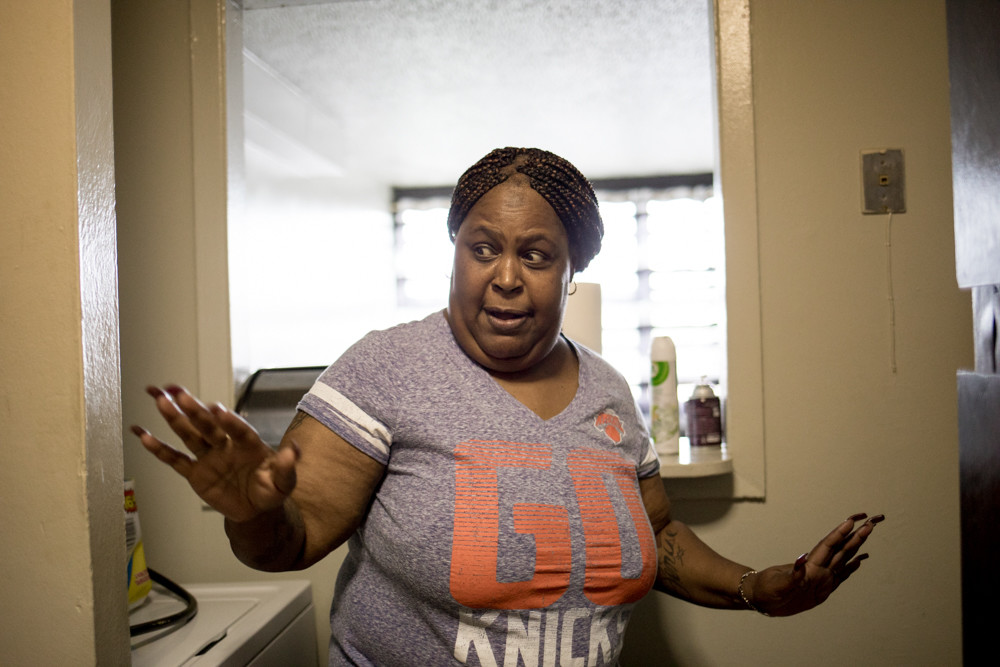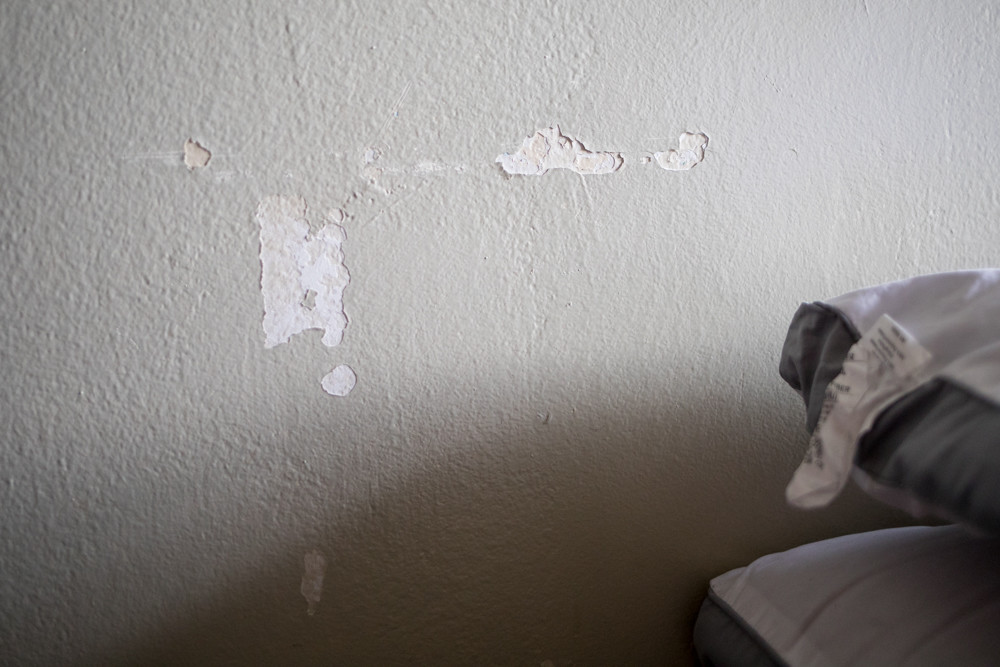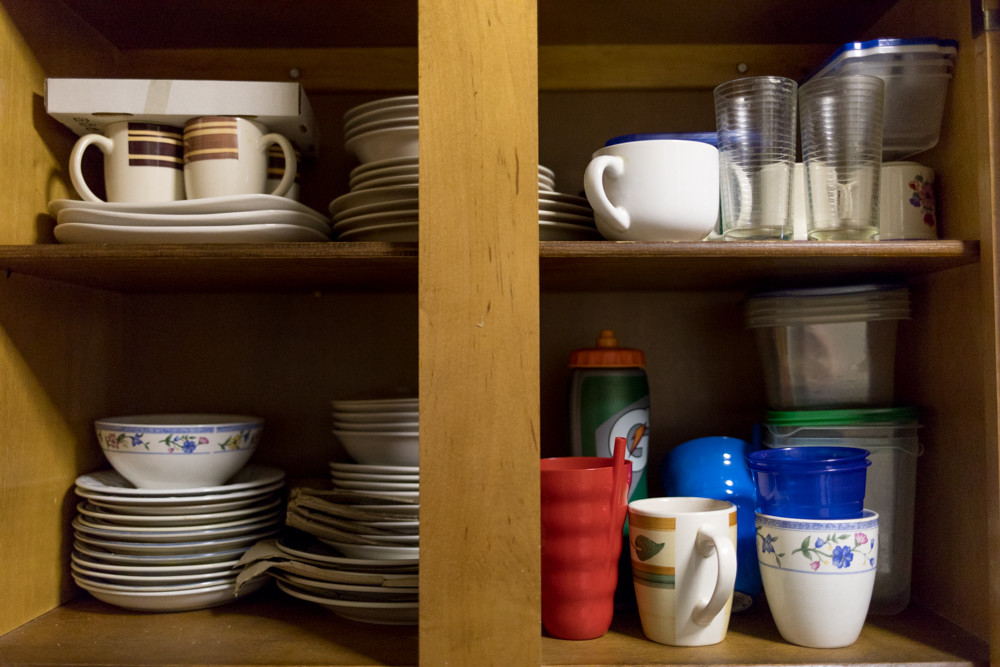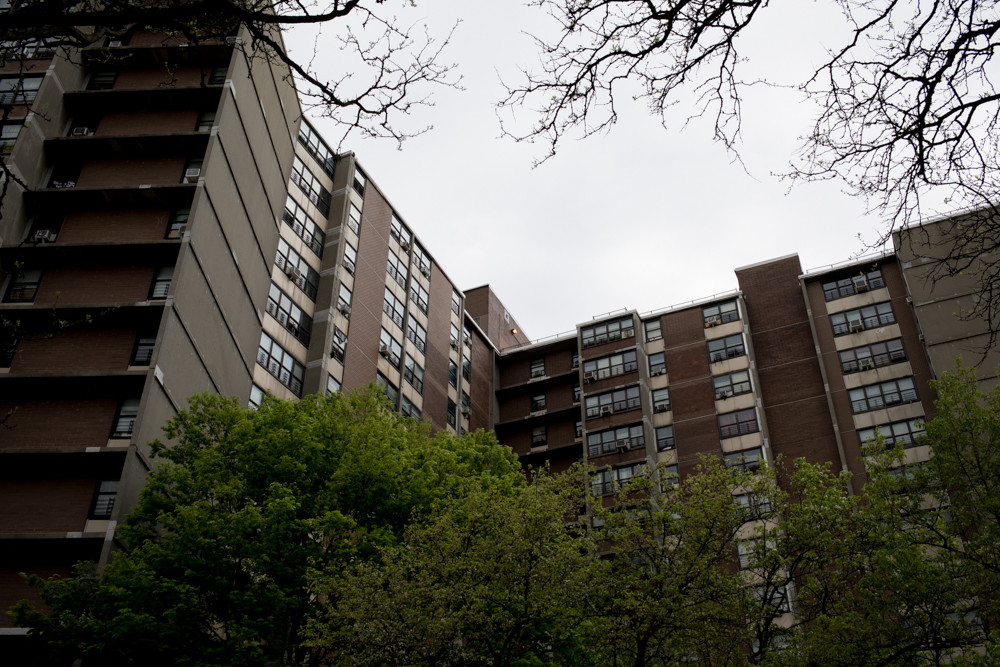Solar gardens? Tenants want working windows first
Denise Beebe cleans her apartment with fastidious care. In fact, she tries to keep the place immaculate.
It’s not that Beebe is overly obsessed with maintaining a spotless home at Fort Independence Houses. But if she doesn’t, the rats and roaches take over.
“I do it for my family,” said Beebe, mother to a high school-aged son, and an older son living in Albany. Her husband works as a chef at a Japanese steakhouse in Manhattan.
“We’re clean people. I don’t leave trash. I don’t leave nothing in my sink. I clean this apartment seven days a week, because I have to — because the rodents will come underneath your door. No one should have to live like this.”
Yet, the New York City Housing Authority is trying to find ways to improve lives — just not necessarily when it comes to rodents.
Last month, NYCHA announced a new program that would provide cheaper clean energy to low- and moderate-income residents by installing solar panels that could generate up to 25 megawatts of renewable energy by 2025.
That’s the largest goal for a multi-family housing owner in the United States, NYCHA officials said.
Known as AcCESSolar — or Accelerating Community Empowered Shared Solar — the program is accepting applications through July from teams of community-based organizations and small solar developers to install community solar gardens on the rooftops of NYCHA buildings.
“NYCHA has a long history of using our scale and capital programs to provide job opportunities in NYCHA communities,” said Deborah Goddard, executive vice president for capital projects, in a release. “By unlocking the solar development potential of NYCHA’s small buildings, AcCESSolar provides an unprecedented growth opportunity to small solar businesses, which we hope will result in career-path green jobs for NYCHA residents.”
But Tony Edwards, president of the Marble Hill tenants association and lifelong NYCHA resident, said he wasn’t aware of the program. He noted Marble Hill’s buildings are “kind of tall,” and probably don’t fit the bill for the smaller structures the initiative seems to be targeting.
In fact, of the 325 rooftops across 65 NYCHA developments listed as potential sites on the city’s open data portal, not one is in Marble Hill, said NYCHA spokeswoman Valeria Munt.
Fort Independence, at 3340 Bailey Ave., however, is on the list. But at 21 stories, resident association president Barbara Lauray doubts her building would be suitable for solar panels. And even if it were, she and her neighbors are far more concerned with more-pressing quality-of-life problems.
“The windows are the No. 1 issue,” Lauray said, because a lot of them don’t close properly. That leaves residents freezing in winter, even when heat is working, and apartments at the mercy of the elements.
“When it rains, we’re completely flooded, which brings in a lot of mold,” Lauray said. “That’s a major issue for people with respiratory problems, children who are asthmatic, seniors. And it’s a shame NYCHA keeps saying they don’t have the money to provide new windows, but in the meantime, you’re talking about how you want to put in solar developments? You’ve got to be kidding me.”
But that’s just the beginning of a long list.
“We have people with ceilings collapsing,” Lauray said. And “the pipes — people are being flooded because these pipes are bursting because they’re so old. There are rats the size of cats.”
Even when maintenance tries to address complaints, they’re not exactly prompt — or even effective.
“NYCHA takes their time coming in to do anything, any kind of repair,” Lauray said. “Sometimes management doesn’t even have the right tools.”
That’s not to say there isn’t progress. Assemblyman Jeffrey Dinowitz provided $500,000 to improve lighting at Fort Independence in 2016, although NYCHA installed the wrong lights, Lauray said.
And Councilman Fernando Cabrera allocated $411,000 for a new stove and refrigerator in each of the development’s 344 units in 2014, but NYCHA reportedly sat on the funds, along with a separate $300,000 allotment to fix up the property’s playground, which will finally start coming together by the end of the month, Lauray said.
“If we don’t follow up with politicians that have a bigger voice than we have, we don’t get anything done here,” she added.
“About that solar whatever-you-calling-it, that’s not the biggest issue over here,” Beebe said. “They shouldn’t even concern (themselves) with that. It’s the problems of mold, the mildew, the rodents, the windows, the leakage, all of that — that’s the main thing.
“This is where we live. We have no other choice but to live here. So work with us, not against us. Listen to us. We’re reaching out to NYCHA. Respond back.”















